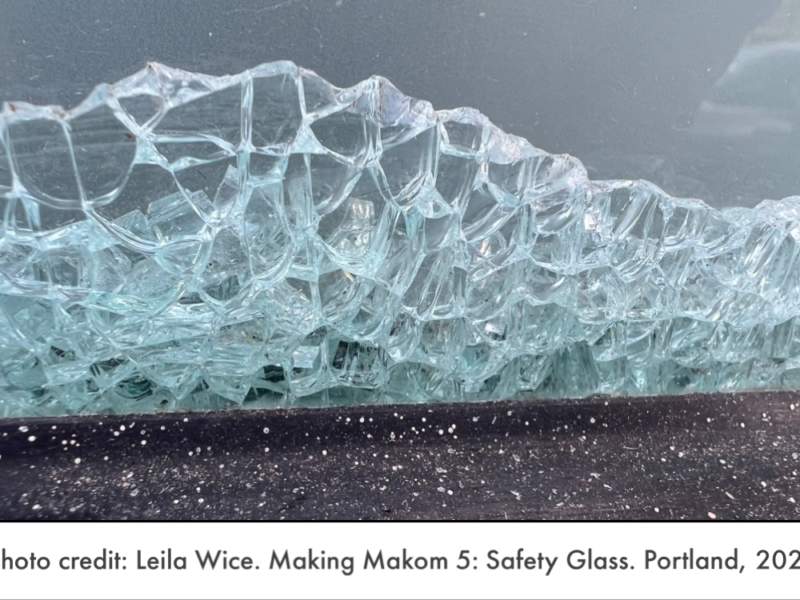
Earlier this year, Jewish philanthropist Jordan Schnitzer opened another exhibition of works from his collection at his namesake Jordan Schnitzer Museum of Art on the University of Oregon campus in Eugene. A UO alumnus, he started contributing art to that institution as soon as he graduated. The Portland native recently sat down with OJL to discuss his inspirations, his philosophy, his Jewishness and the manner in which he selects art for the JSMA and for more than 70 other museums around the world.
OJL: A lot of art you select could be called “edgy.” You’ve often said, “Artists are the chroniclers of our times.” Do you think that role has remained consistent from prehistory until the present day?
JS: More precisely, artists are the conscience of their times. All artists – visual, dance, music – can create enjoyment and distraction, but visual artists especially can be thought-provoking even if they make us feel discomfort. Artists who are critical can be admired and thrive in healthy societies, where it’s OK to look inward by encouraging debate and dissension. But in repressive societies, such artists are absolutely essential. They may be persecuted, but still they rise to stand against fascism, dictatorships or ethnic cleansing.
OJL: Regarding philanthropy, your mother Arlene was quoted as saying that charity is inculcated in Judaism. I think she was referring to the quality we call tikkun olam, healing the world. Is that something that informs the work you do in supporting and democratizing visual arts?
JS: There’s an internal and external answer to that. Internally, to each of us, there’s no one more important than ourselves. Self-interest is part of the survival instinct, and we all do things that make us feel good. No one wakes up wishing to have a terrible day. However, I’ve found that when I help others, I end up feeling even better about myself. It’s a biological, scientific fact: doing good releases chemical endorphins that make us happier. Unfortunately, many people have trouble figuring that out.
Externally, there is “legacy.” Society holds up role models in admiration who made a difference – creating jobs or creating art, diminishing suffering, enriching the world. Whether it’s in a village, a nation or global, the perfect legacy is leaving the Earth a better place than how we found it.
OJL: What differentiates the print collection of Jordan Schnitzer and that of the Schnitzer Family Foundation?
JS: There’s no real separation. It’s all about ideas in art. I have no sense of ownership in art, just as no one can own ideas. The collections simply mean that we are stewards of their messages. And why does art need stewards? Because in art markets, prices have escalated to disgusting levels. There are maybe 50 buyers in the world who can afford to pay $80 million for an original Andy Warhol painting. Now all we see are dollar signs, drawing attention to what something costs over what it is. This is especially ironic with Warhol, because he preached the democratization of art. His silkscreen print series were very affordable – he wanted to get them out to the people.
This price escalation has made exhibiting some work nearly impossible, just from insurance fees and shipping. Our foundation counters that by lending work to museums free and paying for shipping ourselves. We also financially assist visits to exhibitions from school groups, seniors or underserved communities such as kids on Indian reservations. My interest, my joy is in sharing our collection’s great masters, making this art public. It’s a unique niche that we’ve fallen into out of happenstance.
That’s why I love prints and multiples. They are affordable and allow us to expand the collection, while still conveying the freshness and originality of the art. I especially enjoy arranging single-artist exhibits, where we’re surrounded by an entire lifetime of the creative work of one individual.
OJL: What was the process when you were young by which exposure to art evolved into such a passion?
JS: I was always surrounded by art and consider it essential to my life. There was no single moment of awakening, but I do remember discovering the print drawers in my mother’s gallery and immediately loving what I found inside. Even before I started buying art, I was receiving it as gifts for birthdays and Hanukkah. And I recommend to every parent, surround your kids with art, even if it’s just inexpensive pieces from street fairs and markets. Whatever speaks to you, get it, and start your kids on the road to art literacy.
OJL: With all the art you’ve come into contact with, do you let the work alone inform and inspire you, do you delve into the artists’ biographies, or, if still alive, do you seek them out to sit together and have conversations?
JS: My first reaction is simply an immediate visual response, and then I try to get into the artist’s background and how the work is meant to fit into society. I consider the time, place and layers of meaning for me, because, after all, each of us is a unique character who has billions of personal experiences that we bring to our observation of that work of art. I’ve met only a few artists face to face, but in so doing I realized they see the world in a different way, and we can learn from that.
OJL: Does your Jewishness play any role in this?
JS: Being Jewish has had a huge influence on my values and outlook. What’s still an issue for me is that “leap of faith” by which a person accepts all religious dogma at face value. But that doesn’t prevent me from loving the services, feeling I’m part of a Jewish community and being deeply proud of a tradition that goes back 5,000 years.
OJL: Have you ever been tempted to take art lessons?
JS: Yes, I did when I was young, but if you saw what I produced you’d understand why some people are better meant to be collectors and stewards of art.
Joseph Lieberman, coauthor of Jesus: First-century Rabbi, lives in Eugene.





